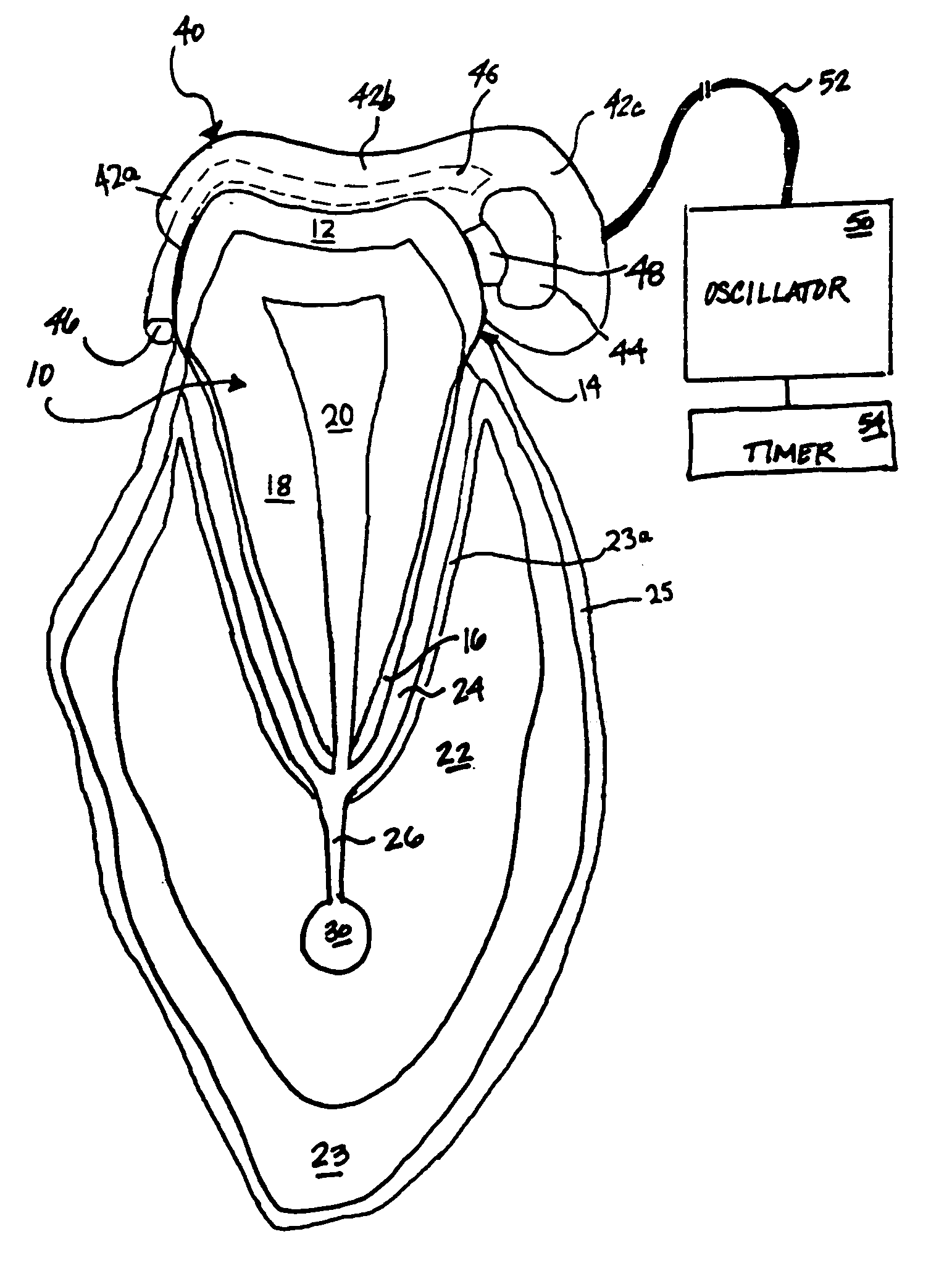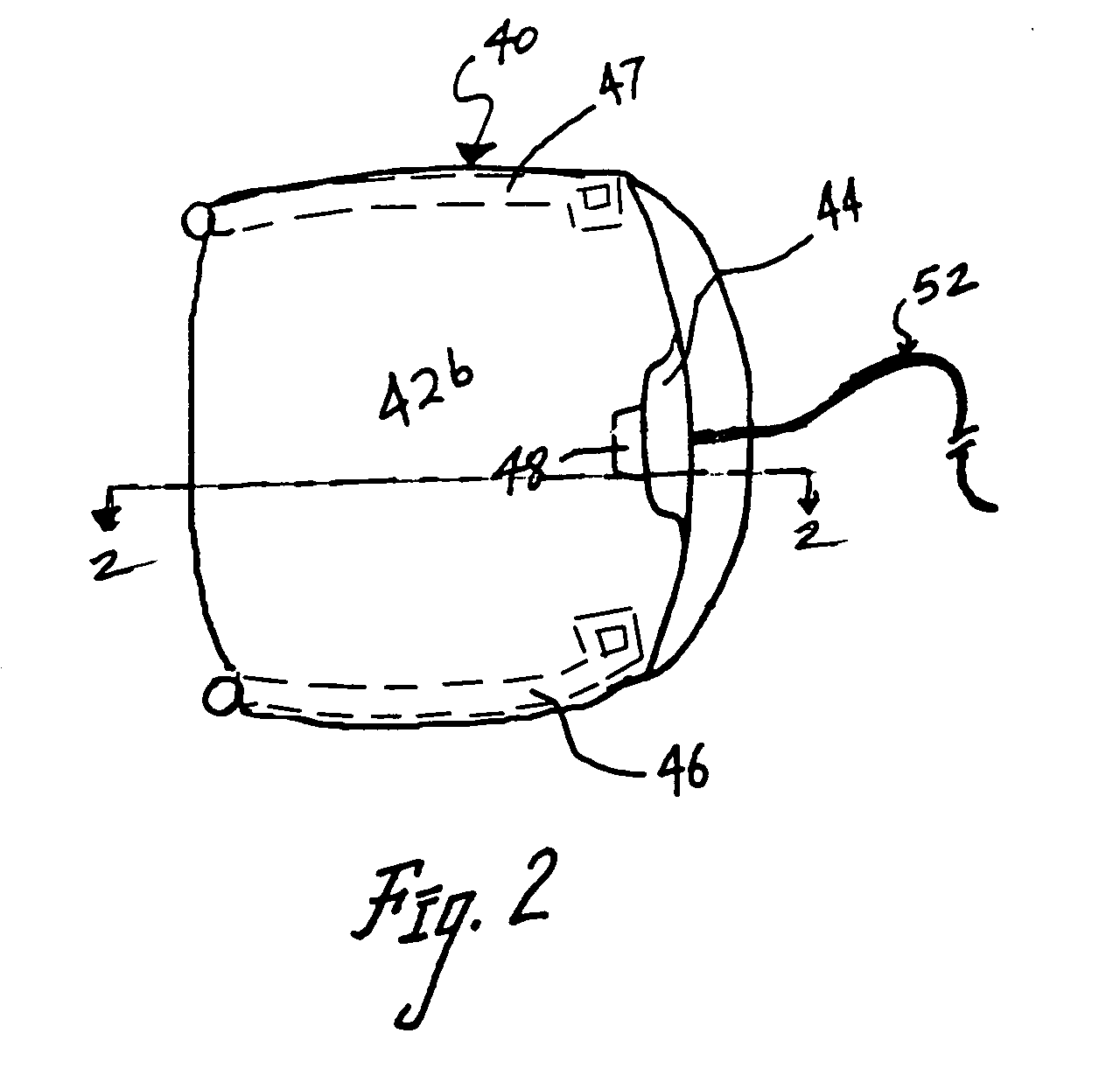Apparatus and method for intra-oral stimulation of the trigeminal nerve
a trigeminal nerve and intraoral stimulation technology, applied in the field of intraoral stimulation of the trigeminal nerve, can solve the problems of difficult discontinuation of benzodiazapine use, adverse reactions, etc., and achieve the effect of enhancing relaxation and/or sleep
- Summary
- Abstract
- Description
- Claims
- Application Information
AI Technical Summary
Benefits of technology
Problems solved by technology
Method used
Image
Examples
Embodiment Construction
I. Theory
[0023]A. Innervation of the Periodontium
[0024]In 1957, Bernick investigated human and monkey periodontium and confirmed that there are two main groups of neural bundles coming from the periodontium: one entering at the apex of the tooth and the other entering through the cribriform plate.5 He also observed spindle-like nervous structures in the apical third of the ligament, nerve endings terminating in the cementum, and fine unmyelinated fibrils forming a network in the periodontal ligament. In 1923, Gerard described the trigeminal or fifth cranial nerve as follows: “The trigeminal nerve is composed of a large sensory division whose unipolar cells are located in the Gasserian ganglion, and a small motor division distributed entirely through the mandibular branch of the nerve. The skin of the face and the mucous membrane of the mouth, tongue, and nose are supplied by pain, tactile and thermal branches which pass into all three branches of the trigeminal nerve; these are the ...
PUM
 Login to View More
Login to View More Abstract
Description
Claims
Application Information
 Login to View More
Login to View More - R&D
- Intellectual Property
- Life Sciences
- Materials
- Tech Scout
- Unparalleled Data Quality
- Higher Quality Content
- 60% Fewer Hallucinations
Browse by: Latest US Patents, China's latest patents, Technical Efficacy Thesaurus, Application Domain, Technology Topic, Popular Technical Reports.
© 2025 PatSnap. All rights reserved.Legal|Privacy policy|Modern Slavery Act Transparency Statement|Sitemap|About US| Contact US: help@patsnap.com



